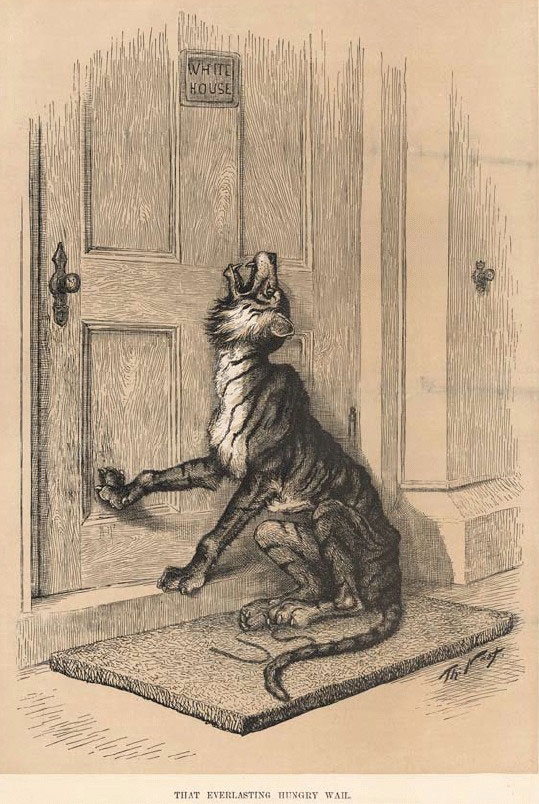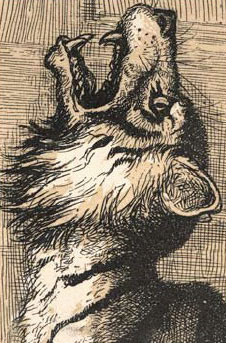- Relief printing
- Intaglio and planographic printing
- Color printing
- Bits and pieces
- Early photography in silver
- Non-silver processes
- Modern photography
- Color notes
- Color photography
- Photography in ink: relief and intaglio printing
- Photography in ink: planographic printing
- Digital processes
- Where do we go from here?
Wood Blocks And Wood Engraving

Letterpress from wood engraving. Thomas Nast. That Everlasting Hungry Wail from Harper’s Weekly. October 10, 1885. 14 3/16 x 9 9/16" (36 x 24.3 cm). The Museum of Modern Art, New York. Gift of Richard Benson. A two-color wood engraving by an anonymous engraver from a drawing by Nast.
One of the great capacities of wood engraving was as a reproductive medium, a role in which it reached a high point in the 1880s, when it was used to make reproductions before the development of purely photomechanical methods. Wood engravings, such as Rimbault's Compound Semi-fixed Engine in the technical journal Engineering, from 1882, are schematic in nature rather than deriving from human vision or a photograph. The wood engraving opposite, made three years later, is different: it is a carefully executed reproduction of a pen-and-ink drawing by a first-rate visual artist. The original drawing, by the nineteenth-century New York political caricaturist Thomas Nast, was animated and lifelike. Slavishly following Nast’s lines, the engraved block has produced a printed ink replica of a drawing originally made by hand.

Detail of Letterpress from wood engraving. Thomas Nast. That Everlasting Hungry Wail from Harper’s Weekly. October 10, 1885. 14 3/16 x 9 9/16" (36 x 24.3 cm). The Museum of Modern Art, New York. Gift of Richard Benson. The second impression gives the appearance of printing white in parts of the tiger, an effect it actually creates by laying down a surrounding pale-yellow color.
The Tammany Tiger has been printed in two impressions. The dominant one, in black ink, is from an intricate block portraying the original drawing. The second impression, made in careful register with the first, is from a simple block that prints a solid pale-yellow color everywhere except in the ruff of the tiger’s throat and chest. This is an example of two-impression printing. This practice of printing in multiple layers would be developed into the most common method for generating color prints.

